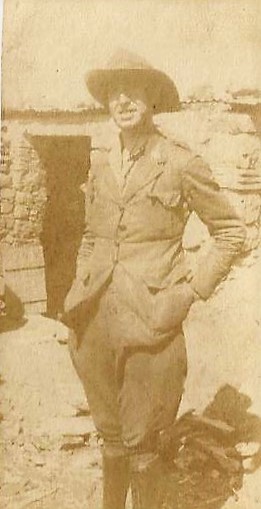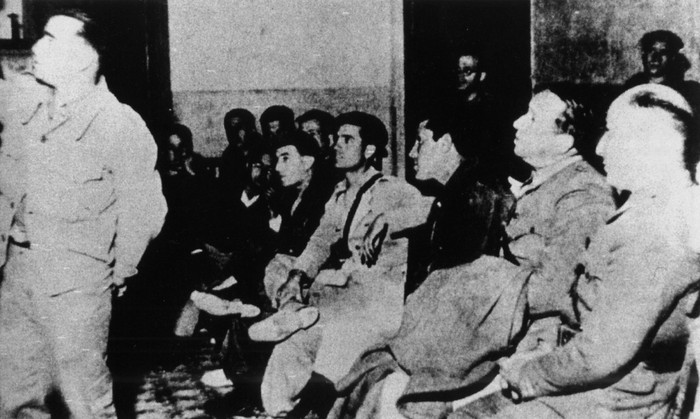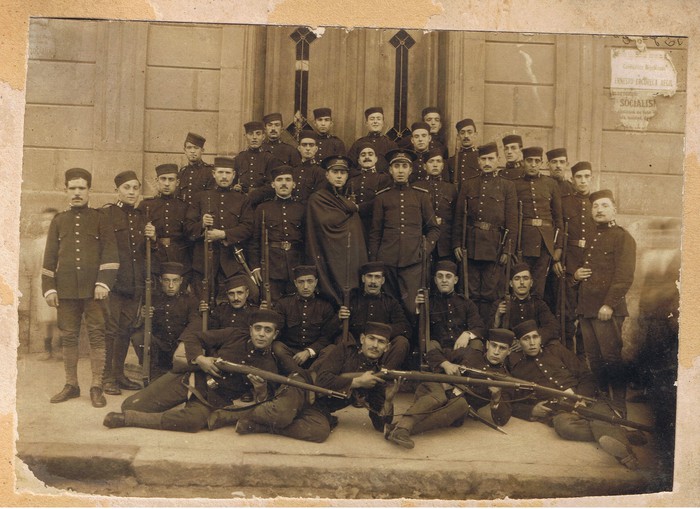“Laudio has an incredible ability to make its citizens completely forget.” This is pointed out by José Luis Navarro, member of the Laudio Memoria Association and the Cofradía de San Roke. Juan Ibarrola is a clear example of this. The strategies he used during the Civil War are known worldwide.
For example, in El Mazuco (Cantabria), with 5,000 combatants, the Francoist offensive was halted, even though it faced an army of some 35,000 soldiers. That skill was the one that made Ibarrola famous. In fact, the military academies of West Point or Sandfalla investigate and teach their maneuvers. On the communist side, Ibarrola also had supporters. Rodion Marinovsky led the South Front of the Soviet Union in the 2nd century. Laudioarra was considered the best military in the Republic during the World War.

Born in Laudio, formed in Africa
Juan Ibarrola was born in Llodio in 1900. After going through Bilbao, he studied at the Toledo Military Academy. During the War in Africa, in other words in Morocco, he acquired a hard war experience and apparently did not like anything. "He left the Army and entered the Civil Guard. It collapsed in Africa because the war was being waged for the benefit of official careers,” said José Luis Navarro.
In fact, Ibarrola was an official of the Civil Guard when the Franco uprising began and aligned with the Republic from the beginning to the last battle. The Basque Army had 5 divisions and it was he who led one of them.
Bloody fronts
This decision led him to participate in the hardest fronts of the North Peninsular: Basque, Cantabrian or Asturian, for example. In all of them, their forces were decisive in keeping the front.
Miraculously, by boat, he fled the Francoist Navy, taking advantage of international waters. As soon as he arrived in the French State, he contacted the Government of the Republic and again assumed important military responsibilities. At that post he led clash troops, communist militias and anarchists. At the moment, relations between the Marxist and libertarian institutions were appalling and yet Juan Ibarrola (passionate Christian) managed to coordinate the movements of both forces on the battlefield without any problems. The soldiers of Ibarrola managed to take Teruel and for a long time protected the front of Alicante. In the Mediterranean area, with more than 36,000 fighters, the Laudioarra order led the offensive in December 1938 and the Franco forces managed to reverse.

In 1939, when the Republic surrendered, the evacuation of high-level politicians and military personnel was prepared. Juan Ibarrola refused to leave his troops. Lieutenant Colonel decided to stay with his soldiers and share his destiny.
Death penalty
Fascism did not show any special compassion for the laudioarra. He knew the concentration camps and the judges sentenced him to death. In Llodio and Bilbao, several francoists protested against the Bateragune case. In fact, Ibarrola prevented the repression from being thrown at them, trying to alleviate the cruelty of the war.
As a result of the pressure exerted, he was sentenced to 30 years ' imprisonment for a murder offence. Subsequently, due to the international situation (II. In the World War, they reduced her even further. Finally, after a few years he went out to the street and headed for Llodio. After the lives of thousands of men had taken over him, Ibarrola advanced as he could, opening a small store. He died in 1976, and until today he has barely pronounced on his name, until the Laudio Report arte.Elkartearen has appeared, the aim is to collect data from the Civil War and Francoist Repression and to facilitate his social reintegration. Several initiatives have already been taken and this work for memory has led them to prepare the book on Juan Ibarrola, with the support of the Cofradía de San Roke.

“His memoirs appeared on a record. The calligraphy was very difficult to understand, and in addition, the pages were messy. Many researchers dismissed working, but we received it eagerly,” explained José Luis Navarro.
In this way, Ángel Larrea, Jon Muñoz, Kepa Barañano, Andoni Larrea and Navarro began to analyze, transcribe and write memories. Along this road, they have enjoyed the cooperation of many people, including José Mari Castillo.
However, it's only part of Ibarrola's autobiography book: “He didn’t give any special importance to what he did. It describes in a few lines the important developments. That is why we have resorted to military archives and historians to contextualize the issue. Many times what was happening on other fronts, at the political or international level, was essential to understand what was happening in the war.”
In total, they have completed a book of about 500 pages and, in their view, there is still room for further study.


